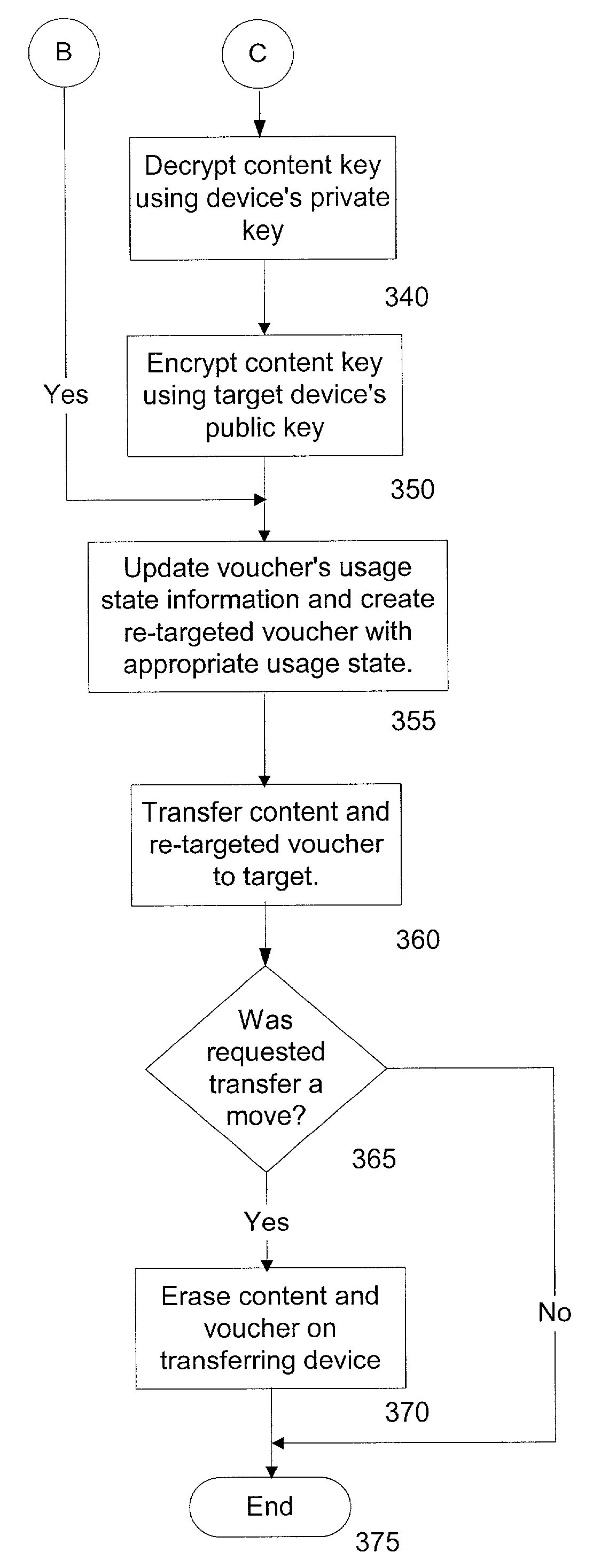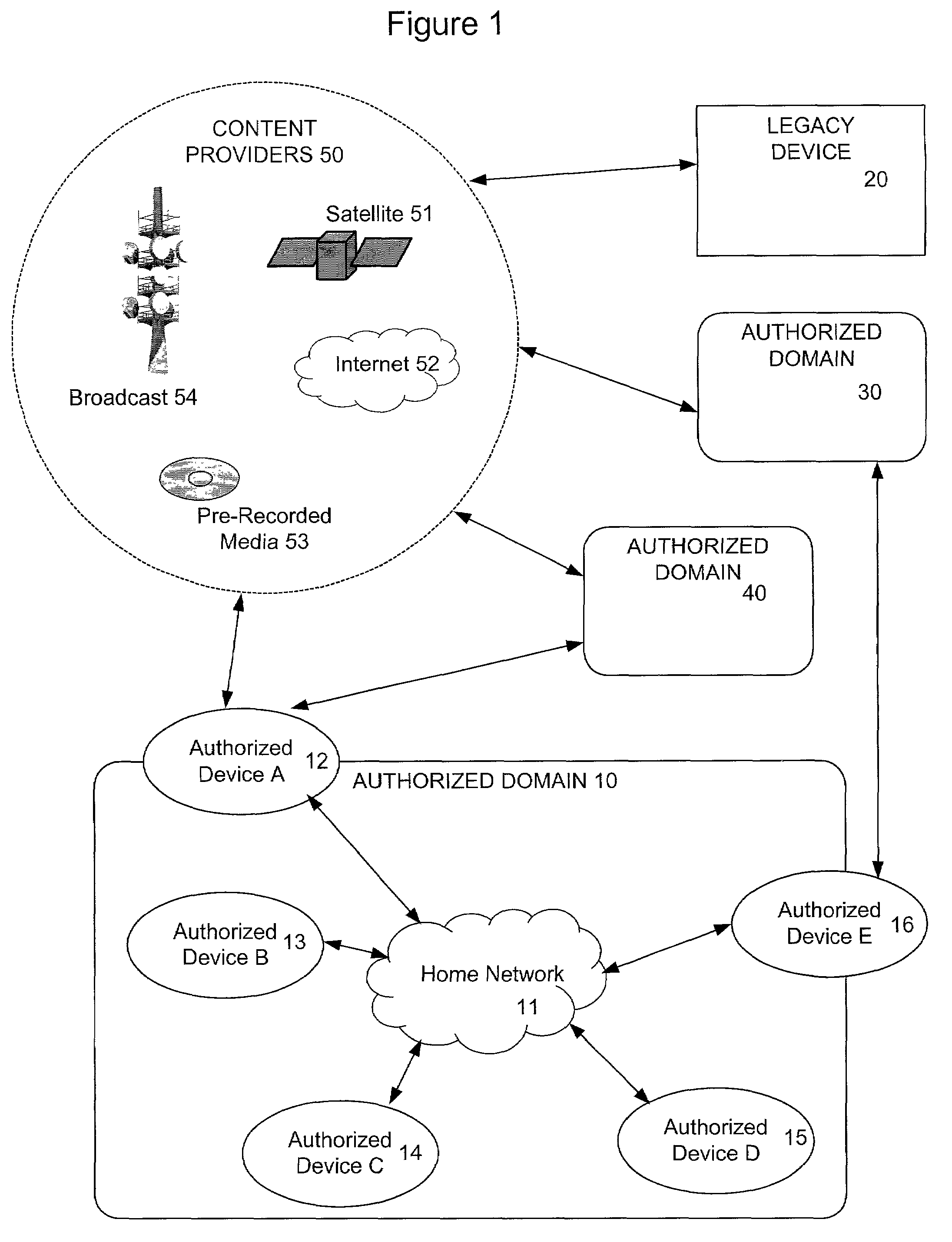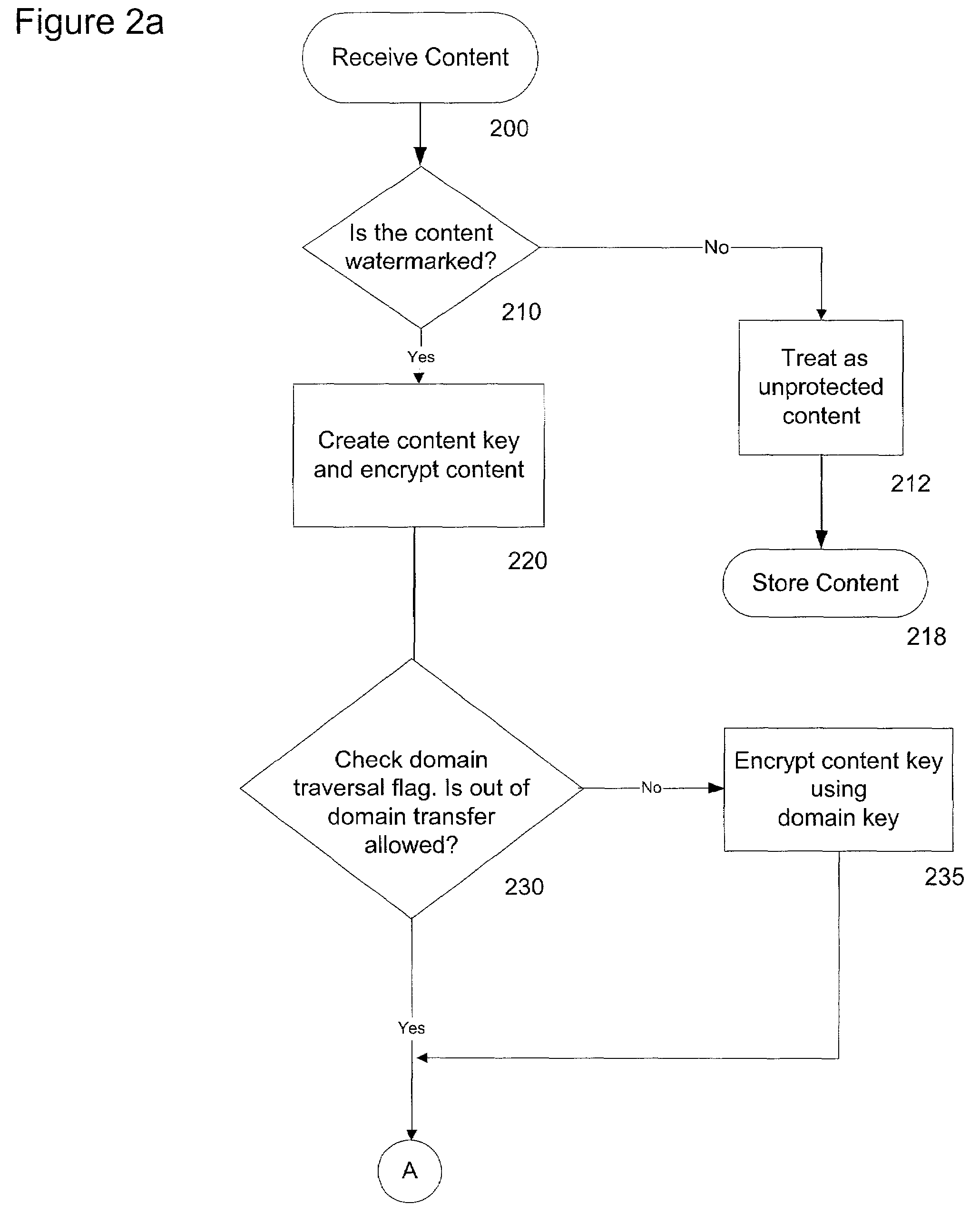System and method for controlled copying and moving of content between devices and domains based on conditional encryption of content key depending on usage
a content key and content technology, applied in the field of system and method for controlling copying and moving of content, can solve the problems of unlicensed copying, unlicensed copying, unlicensed copying, etc., and achieve the effect of facilitating content transfer
- Summary
- Abstract
- Description
- Claims
- Application Information
AI Technical Summary
Benefits of technology
Problems solved by technology
Method used
Image
Examples
Embodiment Construction
[0019]The content protection system of the present invention provides a flexible means for allowing content providers to dictate allowable uses of licensed content. It is built around a logical framework of authorized devices and authorized domains. Authorized devices are simply devices that contain the software and / or hardware necessary to comply with the disclosed system. Authorized domains are groups of authorized devices owned by a user. The inclusion of authorized domains in the content protection system of the present invention provides content distributors with a reasonable boundary to limit users' freedom to use their content.
[0020]FIG. 1 is a block diagram illustrating an exemplary embodiment of the present invention. In accordance with the present invention content providers 50 distribute content to consumers who receive the content on compliant authorized devices, like authorized device A 12, or on non-compliant legacy devices, like legacy device 20. The content providers...
PUM
| Property | Measurement | Unit |
|---|---|---|
| backwards compatibility | aaaaa | aaaaa |
| Backward compatibility | aaaaa | aaaaa |
| backward compatibility | aaaaa | aaaaa |
Abstract
Description
Claims
Application Information
 Login to View More
Login to View More - R&D
- Intellectual Property
- Life Sciences
- Materials
- Tech Scout
- Unparalleled Data Quality
- Higher Quality Content
- 60% Fewer Hallucinations
Browse by: Latest US Patents, China's latest patents, Technical Efficacy Thesaurus, Application Domain, Technology Topic, Popular Technical Reports.
© 2025 PatSnap. All rights reserved.Legal|Privacy policy|Modern Slavery Act Transparency Statement|Sitemap|About US| Contact US: help@patsnap.com



